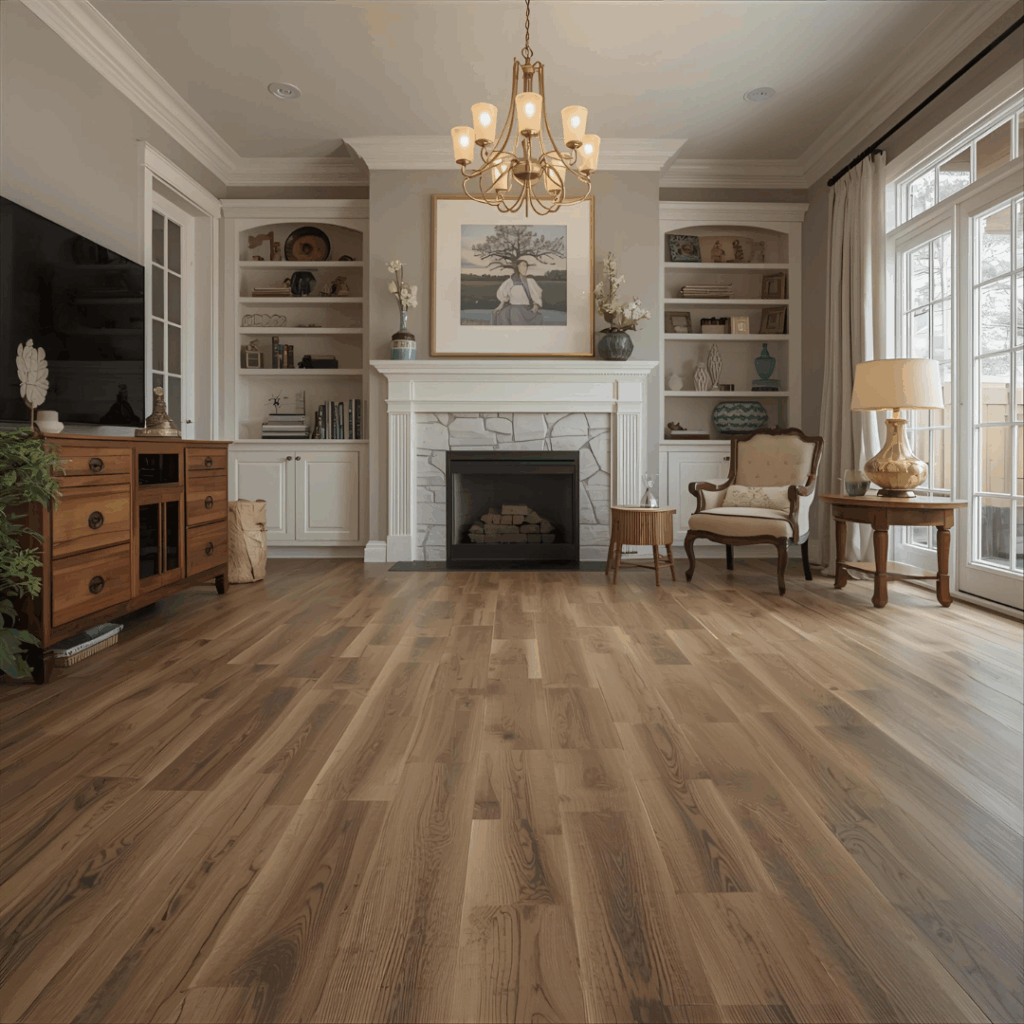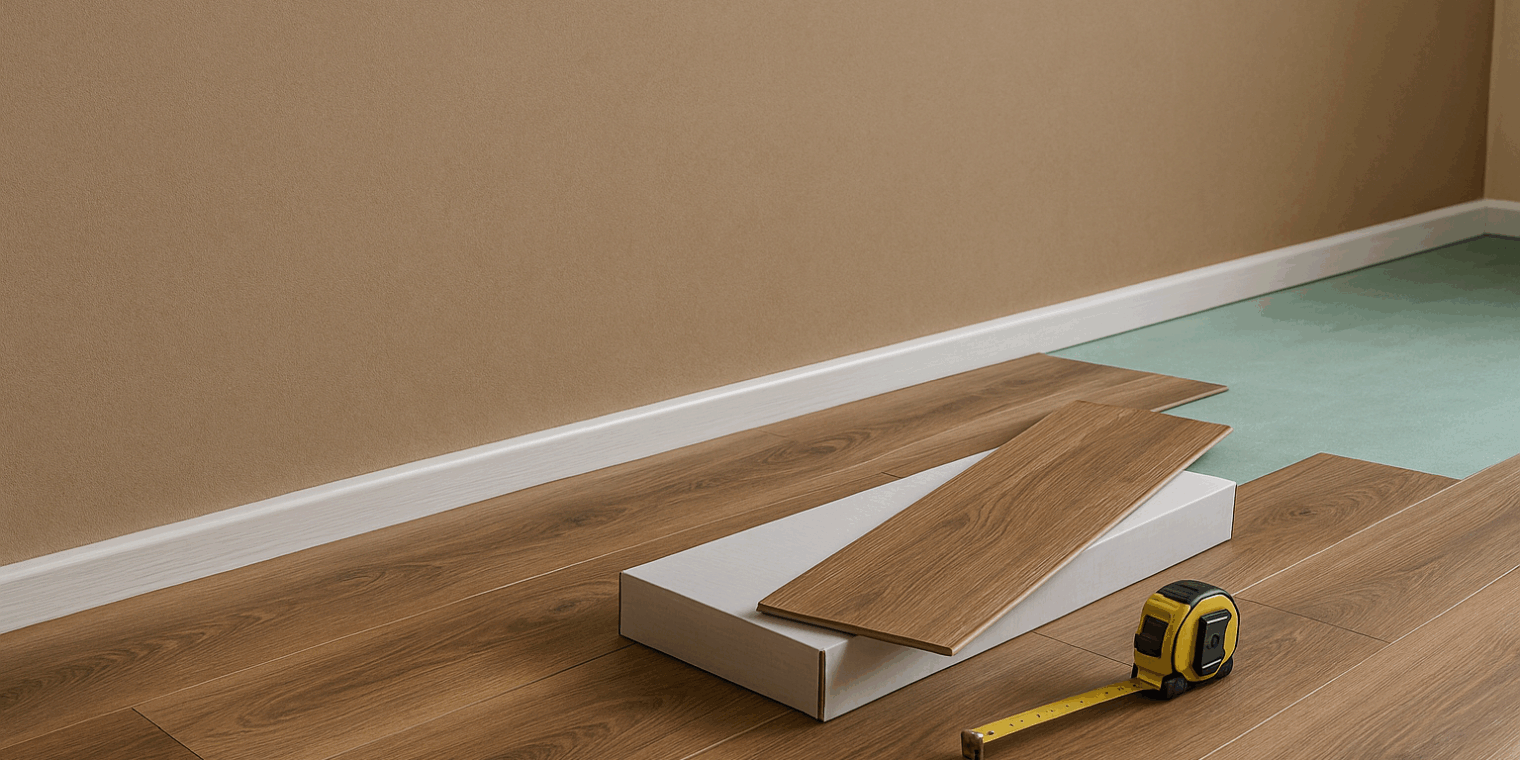Planning a new floor is exciting, but one of the most overlooked details is how much LVP flooring to order. In this LVP Guide, we’ll break down how to calculate the right amount, why buying extra is essential, and how proper planning leads to a seamless flooring installation. Whether you’re renovating a single room or your entire home, this guide will help you avoid costly mistakes and achieve a professional result.

Why You Should Never Order the Exact Amount
It’s tempting to calculate your square footage and order that exact number of planks. But with LVP, that approach almost always leads to problems. Walls aren’t always perfectly square, rooms have corners and angles, and planks need trimming to fit around doors, closets, and other features.
Because of this, flooring professionals recommend ordering 5–10% more material than your total measured area. This extra ensures you have enough to complete your project without delays or mismatched planks later.
Hidden Waste: Why Cuts Consume Extra LVP Planks
No matter how precise your measurements, you will inevitably waste some material during flooring installation. Each room requires you to cut planks to size, and you often can’t reuse those trimmed pieces elsewhere.
- Simple rooms: Add about 5% extra if your space is a simple rectangle.
- Complex layouts: Add 7–10% for rooms with lots of corners, angles, or closets.
Without that cushion, you risk running out of material before the project is done, which can stop installation in its tracks.
Accidents and Damage: Plan for the Unexpected
Even with professional installers, mistakes and accidents happen. A plank could crack during installation, get scratched while moving furniture, or be damaged during delivery. If you’re handling the project yourself, the chances of waste increase even more.
By ordering a little more up front, you’ll be ready for those unexpected moments. Extra material also makes replacing a damaged plank years later much easier, especially since many manufacturers discontinue certain colors or designs over time.
Future-Proof Your Floors With Spare Material
LVP flooring is designed to last for decades, but heavy use, pets, or water damage can still cause wear over time. When you have leftover material from the original installation, repairs become simple and seamless.
Imagine trying to replace a few planks years down the road, only to find out that your style is no longer produced. Even if it’s still available, slight changes in color, lots, or texture can make the new planks stand out. Keeping a small reserve ensures a perfect match every time.
Special Patterns Need Special Planning
If you’re installing your LVP flooring in a pattern like diagonal, chevron, or herringbone, you’ll need more than the standard 5–10% overage. These designs require additional cuts and generate more waste.
Talk to your installer before ordering; they can help you calculate how much extra material is needed based on your chosen pattern and layout direction.
How to Calculate How Much LVP to Buy
Here’s a simple process you can follow:
- Measure each room: Multiply length by width to find square footage.
- Add all spaces together: Include closets, hallways, or connecting areas.
- Add extra material: Multiply your total by 1.05 for simple layouts or 1.10 for complex spaces.
- Round up to full boxes: LVP is sold by the box, so round up to the next full box.
This small investment up front ensures you don’t end up short or scrambling to find matching planks later.
Quality Matters as Much as Quantity
The type of LVP flooring you choose can make a big difference in the flooring installation process and durability. At AZ Floor Solutions, we supply premium materials directly from trusted manufacturers like Provenza, Lion’s Floor, and other industry leaders. High-quality planks are easier to install, more resistant to damage, and look better for longer.
Plus, our team can guide you through the entire process, from selecting the right product to calculating exactly how much material you’ll need. With expert advice, you’ll avoid overbuying while still having enough for cuts, repairs, and future needs.
Common Mistakes to Avoid During Flooring Installation
Homeowners often make these mistakes when buying LVP flooring:
- Ordering too little: Running out mid-project leads to delays and mismatched replacements.
- Not accounting for cuts: Ignoring trimming waste results in shortages.
- Skipping future planning: Failing to store extra planks can make repairs difficult later.
- Choosing low-quality materials: Cheap products can chip or warp, increasing waste.
Avoid these pitfalls by planning ahead and working with professionals who understand flooring from start to finish.
A Little Extra LVP Goes a Long Way
Buying extra material might seem unnecessary at first, but it’s one of the smartest moves you can make during a flooring project. It protects you from unexpected issues, saves time and money, and ensures your floor stays beautiful for decades.
Remember: LVP flooring isn’t just a home upgrade, it’s an investment. And like any investment, planning pays off.
Transform Your Floors with AZ Floor Solutions
Ready to start your project with confidence? At AZ Floor Solutions, we make flooring simple, stress-free, and built to last. Our team will help you choose the best materials, calculate how much you need, and complete your flooring installation with precision and care.
📞 Call us today at 623-336-1707 or schedule a free consultation and get a personalized LVP Guide for your home. With the right planning, your new floors will look perfect and stay that way for years to come.

